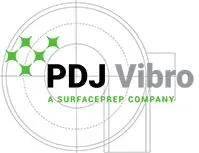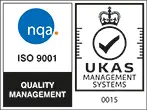
While at first glance vibratory deburring may seem somewhat a niche market it should be noted that every an enormous range of mass produced metal, plastic and even (in some cases) wooden components require deburring. The UK has been the home of vibratory deburring. These machines are also a standard solution for the manufacturing community internationally.
It is now common-place to find a vibratory deburring machines adjacent to laser cut, waterjet cut and CNC milling operations.
The benefits of being able to take stillages of sharp edged laser cut or waterjet cut, CNC milled components and make them clean, bright and deburred, at a consumable cost in the region of £1 / £2 per stillage, are numerous. Vibratory deburring machines rarely breakdown and the uniformed results are easy to duplicate time after time. With the latest machines coming complete with sealed for life bearings and the fabrications being stressed relieved these machines require nominal levels of maintenance.
Along with the traditional deburring of metal pressings and casting applications the latest consumables from the PDJ Vibro range of can now improve surfaces from 0.2 ra to 0.03 ra.
Given the above it is clear to see why the medical, motor sport and aerospace industries have depended on vibratory deburring for decades.
How It Works.
The vibratory deburring machine consists of a process chamber (usually lined with a protective rubber or polyurethane) which is mounted on springs and on a base. The process chamber is most frequently circular with a centre plate on which the motor is mounted.
The motor is fitted with top and bottom weight segments that are off-set by 90 degrees. When the motor is running normally at 1500 rpm the process chamber vibrates.
Circular Bowl Deburring Machines.
The vibration causes the media (abrasive / polishing chips) in the process chamber to move in a torroidal (corkscrew) action. This action causes the media to affect the surface of the components. Given the correct media, levels of water, chemical additive and time this process will produce results ranging from light deburring / edge breaking to radiusing, burnishing, super-finishing, descaling, degreasing and corrosion inhibition.
Circular bowl vibratory deburring machines were first introduced over 40 years ago and now represent the vast majority of sales as the design ensures part damage can be avoided and that a flap and screen can be operated to separate the component from the chips / media.
View the Circular Bowl Deburring Machines »
Vibratory Trough Deburring
Due to the shape vibratory troughs remain the ideal solution for processing longer / larger components like turbine blades, curtain poles, cylinder blocks etc. Should large components be delicate, divider plates can create compartments giving separate chambers which completely eliminate the potential for part on part damage.
(Automatic unloading is not generally available with troughs and it should be noted that components tend to migrate to the ends of the chamber which can cause impingement).





























